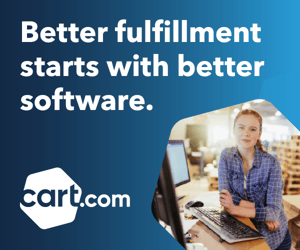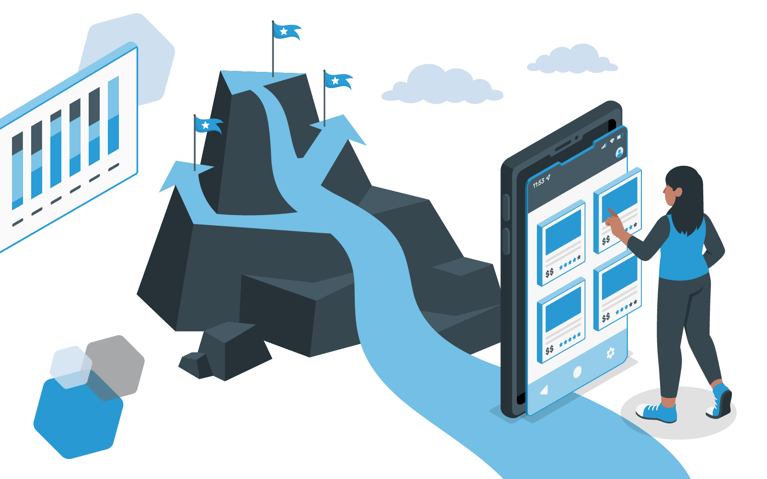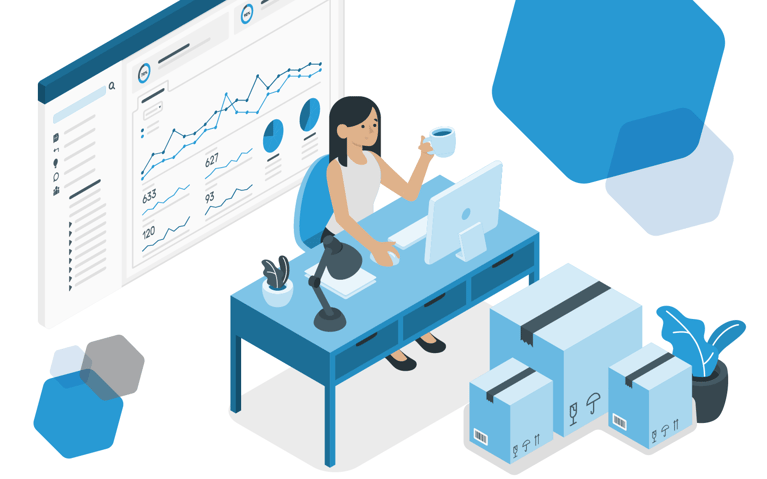Every interaction a customer has with your brand is an opportunity to guide them to the next stage of their journey. In retail, the goal is an initial purchase, then repeat purchases and ultimately, long-term loyalty and advocacy. Loyalty is critical. Think of the 80/20 rule (or Pareto Principle): 80% of a business’s profits come from 20% of its customers. Statistics back this up, with existing customers 50% more likely to try new products and spend 31% more, on average, compared to new customers.
Lifecycle marketing – which can drive customer retention – is a crucial strategy for building loyalty and advocacy. Lifecycle marketing is about nurturing relationships at every stage of the customer journey through personalized communication, relevant offers and exceptional experiences. This approach lets you understand and cater to evolving needs and preferences over time to cultivate long-term relationships and transform one-time buyers into loyal brand advocates.
Lifecycle marketing definition
Lifecycle marketing is a strategic approach that focuses on engaging customers at every stage of their journey with a brand, from initial awareness to post-purchase advocacy. Brands and marketers work to identify and understand customer needs and preferences at each stage. They then work to engage through targeted communication, personalized experiences and relevant offers tailored to each part of the customer lifecycle. By building stronger relationships, they can better foster brand loyalty and maximize customer lifetime value. Put simply, lifecycle marketing aims to create a seamless and satisfying customer experience, increasing retention, encouraging advocacy and driving long-term success and growth for the brand.
What does lifecycle marketing look like?
Meet Sarah, a passionate online shopper with a knack for fashion. She spends time each day browsing brands and influencers on social media, visiting her favorite brand websites and putting together her Pinterest fashion and style boards. Recently, Sarah discovered a boutique clothing brand, Fractional, through social media and decides to make her first purchase – a dress for an upcoming event.
Fractional captivates Sarah with targeted ads showcasing their latest collection. Intrigued, she clicks through to their website, where she enjoys a seamless shopping experience and makes her purchase. After completing her order, Sarah receives a personalized welcome email from Fractional, offering styling tips for the dress she just bought and a discount on her next purchase. She feels valued and excited to explore more of what the brand offers.
Fractional stays top of mind for Sarah through engaging email newsletters, social media updates and exclusive previews of upcoming collections. She feels connected to the brand and eagerly anticipates their new arrivals. She’s now an avid follower and appreciates the style ideas her interactions generate. After a few purchases, Sarah is a loyal customer. She receives special offers and rewards, such as birthday discounts and early access to sales. She likes the personalized attention and continues to shop with Fractional.
Stages of the customer lifecycle
It’s easy to get lost in terminology rather than focusing on concepts. The customer journey and customer lifecycle can be mapped out slightly differently depending on the person or business presenting. However, the overarching concepts are the same. With lifecycles, you’ll encounter stages that include:
- Acquisition, attract, discovery, search or awareness
- Interest or engagement
- Evaluation or consideration
- Purchase, conversion or decision
- Support, onboarding or retention
- Loyalty and advocacy
No matter how you frame it, the stages are much the same and outline the journey a customer goes through, from initial awareness of a product to becoming a loyal advocate. In general, the stages will look like this:
Awareness
The lifecycle begins with the Awareness stage, where potential customers first become aware of a brand or product. This happens through various channels such as advertising, social media, word-of-mouth or search engines. Businesses aim to capture the attention of their target audience and generate interest in what they offer.
Engagement
Once customers are aware of the brand, the Engagement stage involves interacting with them through various touchpoints to deepen their interest and connection. This can include providing valuable content, engaging on social media or offering promotions to encourage further interaction. The goal is to keep the brand top of mind and encourage ongoing engagement.
Evaluation
During the Evaluation stage, customers actively assess the value proposition of the product. They may compare features, read reviews or seek recommendations to make informed decisions. Brands must provide transparent information and address any concerns to guide customers towards a positive evaluation.
Purchase
The Purchase stage marks the moment when customers decide to buy the product. This can occur online, in-store or through other channels depending on the business model. It's essential for businesses to ensure a smooth and frictionless purchasing process to minimize barriers and facilitate conversions.
Support
After the purchase, the Support stage provides assistance, follow-up and addresses any post-purchase issues or questions. This can include customer service, technical support or product assistance. Offering excellent support reinforces customer satisfaction and builds trust in the brand.
Loyalty
The final stage of the lifecycle is Loyalty, where satisfied customers become repeat buyers and advocates for the brand. Building loyalty requires ongoing engagement, personalized experiences and rewards programs to incentivize continued patronage and word-of-mouth referrals. Loyal customers not only contribute to recurring revenue but also serve as brand ambassadors, expanding reach and driving growth through their positive endorsements and recommendations.
Strategies for turning one-time buyers into lifelong advocates
Each stage of the lifecycle is full of opportunities to interact with customers through touchpoints and build relationships. Even before the first purchase, you’re aiming to create advocates. Think about the information people share with their friends and community before becoming a customer. “It’s the most beautiful website.” “They give ideas on what accessories to wear.” “I really like their shoe finder. Have you tried it?”
The seeds of loyalty are planted at first engagement. To turn one-time buyers into lifelong advocates, try:
During awareness
- Targeted advertising: Utilize data-driven targeting techniques to reach potential customers who are likely to be interested in the brand or product.
- Compelling content: Develop high-quality, engaging content across various channels such as social media, blogs and videos to capture attention and spark interest.
- Influencer partnerships: Collaborate with influencers or brand ambassadors whose audience aligns with the target market to increase brand visibility and credibility.
During engagement
- Personalized communication: Tailor communication and messaging to individual preferences and behaviors, fostering a sense of connection and relevance.
- Interactive experiences: Create interactive elements such as quizzes, polls or contests to encourage active participation and deepen engagement.
- Social media engagement: Actively engage with followers on social media platforms by responding to comments, initiating conversations and sharing user-generated content to build a community around the brand.
During evaluation
- Transparent information: Provide comprehensive product details, including features, specifications, and pricing, to empower customers to make informed decisions.
- User-generated reviews: Showcase authentic customer reviews and testimonials to build trust and credibility, highlighting positive experiences and addressing any concerns.
- Product demos: Offer virtual or in-person product demonstrations to allow customers to experience the product firsthand and address any questions or doubts they may have.
During purchase
- Seamless purchasing experiences: Optimize the checkout process to minimize friction and make it easy for customers to complete their purchase quickly and efficiently.
- Exclusive offers: Provide special discounts, promotions, or incentives to encourage immediate action and drive conversions.
- Loyalty rewards: Introduce a loyalty program that rewards customers for their purchases, encouraging repeat business and giving a sense of appreciation and value.
During support
- Proactive customer support: Anticipate and address customer needs by providing timely and helpful assistance through various channels such as live chat, email, or phone support.
- Hassle-free returns: Simplify the returns process and offer flexible return policies to reassure customers and provide peace of mind.
- Follow-up communication: Reach out to customers after their purchase to gather feedback, offer assistance or provide additional value-added content, strengthening the relationship and ensuring satisfaction.
During loyalty
- Loyalty programs: Design a tiered loyalty program with exclusive perks, rewards and benefits for loyal customers, incentivizing continued engagement and repeat purchases.
- VIP benefits: Offer VIP treatment to top-tier customers, such as early access to new products, personalized recommendations and dedicated support channels.
- Personalized recommendations: Leverage customer data and purchase history to provide tailored product recommendations and offers, enhancing the shopping experience and deepening brand loyalty.
Measure your efforts so you can adjust and evolve your strategy. Use KPIs such as A. Customer Lifetime Value (CLV), Customer Churn Rate, Net Promoter Score (NPS), Referral Rates and Revenue.
Advocacy begins with an exceptional experience, customer retention and loyalty. Many of today’s customers do not consider themselves loyal to a brand until they make 4 or more purchases, making it critical for businesses to drive repeat purchases. Lifecycle marketing nurtures customers over time and continuously, increasing satisfaction, repeat purchases and resulting in a strong sense of loyalty.
Cart.com for expert commerce services
Whether you’re looking for help implementing a lifecycle marketing strategy or want to elevate SEO, content or marketplace management efforts, Cart.com offers solutions that help you reach and retain customers. Our services are designed to help you increase demand, improve conversion and manage operations across channels. Contact our team today to learn more.







